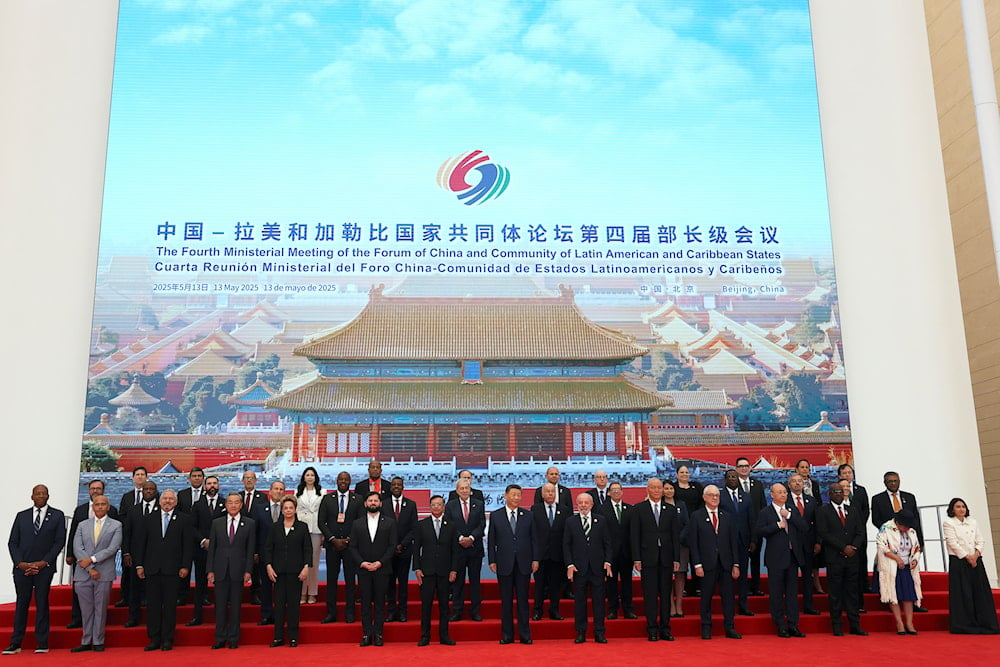China, Latin America unite in face of Trump's tariffs, trade war
China strengthens Latin America relations with new trade, investment, and political cooperation plans, responding to US-led protectionism and division.
-

Chinese President Xi Jinping, along with leaders from Brazil, Chile, Colombia, and other CELAC nations, attend a photo session before the China-CELAC Forum in Beijing, on May 13, 2025. (AP)
In response to US President Donald Trump's trade war policies, China is advancing its diplomatic and economic ties with Latin American nations, signaling a strategic shift toward multipolar partnerships.
Chinese President Xi Jinping reaffirmed Beijing’s commitment to deeper collaboration during a gathering in Beijing on Tuesday with leaders from Latin America and the Caribbean.
Speaking at the China-Community of Latin American and Caribbean States Forum, Xi emphasized China's readiness to “join hands” with regional nations to confront mounting global challenges such as political polarization, bloc-based divisions, and the resurgence of unilateralism and protectionism.
“There are no winners in tariff wars or trade wars,” Xi said, reiterating Beijing’s stance on global trade tensions. Leaders from Brazil, Chile, and Colombia were among the high-level officials present at the event.
China-Latin America ties deepen through trade, exchange
As part of its strategy to enhance China-Latin America relations, Xi announced a comprehensive five-point initiative encompassing political cooperation, economic development, cultural exchange, academic collaboration, and global security.
China pledged to expand imports from the region, particularly in agriculture and raw materials, and to encourage Chinese companies to increase their investments, including a new credit line worth 66 billion yuan (approximately $9.2 billion) that will be made available to support development financing across Latin America and the Caribbean.
Beijing also plans to scale up cooperation in strategic sectors, including clean energy, 5G telecommunications, artificial intelligence, and the digital economy.
Unity takes form
These efforts are aligned with ongoing China Belt and Road Latin America projects, which have already seen major infrastructure developments such as 5G installations, port construction, and hydropower facilities across the continent.
China's trade volume with Latin America surpassed $500 billion last year, propelled by rising Chinese imports of soybeans, beef, crude oil, iron ore, and critical minerals, solidifying its role as a key economic partner for the region.
In addition to economic collaboration, Beijing will strengthen cultural and academic ties by offering 3,500 government scholarships and inviting 300 Latin American political party members to China annually for the next three years.
Visa exemptions will also be extended to five countries in the region, with more expected to follow, though specific nations were not immediately named.

 3 Min Read
3 Min Read








